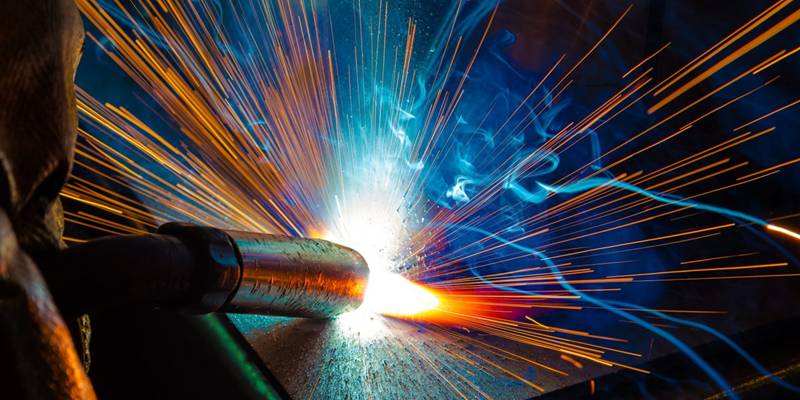Developing a Welding WPS: Step-by-Step Directions for Professionals
Developing a Welding WPS: Step-by-Step Directions for Professionals
Blog Article
The Ultimate Overview to Welding WPS Procedures: An Extensive Summary for Welders
In the elaborate globe of welding, Welding Treatment Specs (WPS) offer as the foundation of ensuring top quality, uniformity, and security in welding procedures (welding WPS). As we delve right into the different elements of a WPS and discover the details of certification and accreditation, we will certainly uncover the vital role these procedures play in the realm of welding.
Value of WPS Procedures
Understanding the significance of Welding Treatment Requirements (WPS) treatments is critical for ensuring the high quality and stability of bonded structures. WPS treatments act as a roadmap for welders, outlining the required actions, criteria, and products required to attain a sound weld. By adhering to WPS guidelines, welders can make sure consistency in their work, causing dependable and structurally audio welds.
One of the main reasons WPS procedures are essential is their role in keeping weld top quality and honesty. Adhering to the specified welding parameters and strategies laid out in the WPS helps prevent flaws such as porosity, splitting, or incomplete blend, which can endanger the toughness and toughness of the weld. Furthermore, WPS treatments are important for making sure compliance with market requirements and codes. By following established WPS standards, welders can demonstrate that their job meets the required requirements for safety and security and high quality, offering guarantee to clients, inspectors, and regulative bodies. Basically, the importance of WPS procedures can not be overemphasized, as they are fundamental to accomplishing consistent, top quality welds that fulfill market criteria and specs.

Elements of a WPS
A Welding Treatment Specification (WPS) usually makes up crucial elements that information the particular needs for carrying out a weld, making sure uniformity and quality in the welding process. The key elements of a WPS consist of important variables such as base metals, filler steels, interpass and preheat temperatures, welding procedures, protecting gases, welding placements, and post-weld warm therapy demands.
Base steels describe the products being joined, while filler steels are utilized to fill up the void between the base metals throughout welding. Preheat and interpass temperatures are crucial for managing the warmth input and avoiding issues like cracking or distortion. The welding procedure lays out the certain method to be used, whether it's gas steel arc welding (GMAW), secured metal arc welding (SMAW), or one more method. Shielding gases safeguard the weld swimming pool from climatic contamination. Welding placements define the positionings in which welding can be executed. Post-weld warm therapy might be essential to eliminate tensions and enhance the weld's homes. A thorough understanding of these elements is critical for creating a effective and thorough WPS.

Qualification and Accreditation
Having actually developed the necessary elements of a Welding Procedure Specification (WPS), the focus now moves towards the crucial elements of qualification and certification in welding practices.

Qualification, on the various other hand, is the formal recognition of a welder's qualifications by an appropriate accreditation body or company. Welding accreditations are usually based upon the particular welding procedures, products, and positions a welder is qualified to work with. Holding a valid welding qualification shows that a welder satisfies sector criteria and is skilled to execute welding tasks to the needed specifications.
Producing a WPS
To develop a Welding Treatment Spec (WPS) that meets sector standards, cautious factor to consider of welding procedures, materials, and functional specifications is important. The first step in developing a WPS is to identify the welding process to be used, such as gas steel arc welding (GMAW) or secured steel arc welding (SMAW)

Carrying Out and Keeping An Eye On WPS
Upon completing the extensive Welding Treatment Requirements (WPS) that carefully details welding processes, materials, operational specifications, and top quality guarantee measures, the focus shifts to successfully applying and keeping an eye on the recognized treatments. Implementation involves making sure that all welders associated with the project recognize with the WPS and follow it diligently during the welding procedure. This requires providing adequate training and supervision to guarantee adherence to the defined procedures. Keeping an eye on the WPS includes continuous oversight to confirm that welding activities align with the recorded specs. Examinations, screening, and top quality control procedures are essential elements of the monitoring procedure to identify any problems or inconsistencies quickly. Regular audits and evaluations of the welding procedures help in maintaining consistency and top quality throughout the job. Reliable application and tracking of the WPS are vital for making sure the honesty, toughness, and safety of the bonded joints, inevitably adding to the overall success of the welding task.
Conclusion
In verdict, understanding and adhering to Welding Procedure Requirements (WPS) is essential for welders to ensure high quality, consistency, and safety in their work. By understanding the components of a WPS, obtaining correct credentials and certifications, producing comprehensive treatments, and executing and monitoring them successfully, welders can enhance their abilities and effectiveness in welding methods. Sticking to WPS procedures is vital for creating top notch welds and meeting market standards.
In the complex world of welding, Welding Treatment Requirements (WPS) offer as the backbone site link of making sure quality, uniformity, and safety and security in welding operations. The welding procedure details the details method to be made use of, whether it's gas steel arc welding (GMAW), secured steel arc welding (SMAW), or one more approach.To establish a Welding Procedure Specification (WPS) that satisfies sector standards, careful factor to consider of welding processes, products, and functional specifications is important. The first action in developing a WPS is to recognize the welding process to be used, such as gas steel arc welding (GMAW) or secured metal arc welding (SMAW)Upon finalizing the thorough Welding Treatment Spec Recommended Site (WPS) that diligently details welding processes, products, functional specifications, and top quality assurance steps, the focus moves to successfully implementing and keeping track of the well-known procedures.
Report this page